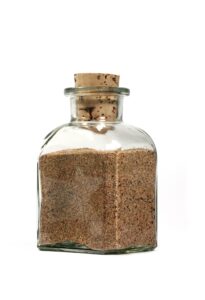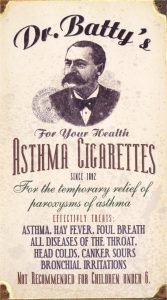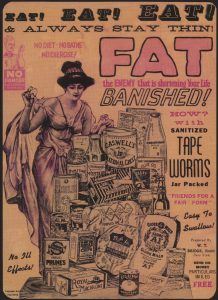 EDE’S PATENT AMERICAN EYE
EDE’S PATENT AMERICAN EYE
LIQUID CURES
Eyes! which Ache with tears that’s shed,
Eyes! which Bloodshot overspread;
Eyes! which Cataracts oppress,
Eyes! which Dimness too distress;
Eyes! which Evening fogs soon blight,
Eyes! which Fever weakens quite;
Eyes! which Great depression gives
Eyes! which Health enfeebled leaves;
Eyes! which Inflammation show,
Eyes! which Jaundice spoils we know
Eyes! which Kells attack with rage,
Eyes! which Languish too with age;
Eyes! which Misty are and dull,
Eyes! which Nervousness we cull;
Eyes! which Overwork will show,
Eyes! which Palsy weaken so;
Eyes! which Quincy oft attacks,
Eyes! which Rheumatism racks;
Eyes! which Specks soon flickering spoil,
Eyes! which Time will dim with toil;
Eyes! which U once prized so much,
Eyes! which Various causes touch;
Eyes! Which Weakness will display,
Eyes! which Xcell’d in many a way;
Eyes! which You such pleasure gave,
Eyes! which Zeal would prompt to save!
MORAL
Beautiful Eyes! What a treasure they are,
Whilst above all attractions they soar;
If aught befall them how sadly we grieve,
And the loss of their beauty deplore;
But if any danger should threaten your eyes,
Why, here is a safeguard indeed;
Whilst thousands can vouch for the wonderful cures
That’s made by the liquid of EDE!
One Fact is worth a Bushel of Arguments.—The number of testimonials received from those that have been cured speaks volumes as to the value of the well-known PATENT AMERICAN EYE LIQUID. Unlike many similar preparations, it is perfectly harmless, and the only cure for dimness, aged, weak, watery, sore, bloodshot, kells, cataracts, specks, colds, inflamed, near sight, over-worked, and every disease of the eye. Sold by all chemists, 1s. 1½d. and 2s. 9d.; from EDE, Eye Liquid Depot, Birmingham, 15 and 35 stamps. Bottle enlarged.
Book on “Human Eye,” with Testimonials and Opinions of Press, three stamps.
Source: Reynold’s Newspaper (London) 21 April 1878
——————————————————————————————-
John Ede’s poetical talents might run out of steam towards the end of the alphabet but they were better than his money management skills.
Ede started out as a wholesaler, purchasing and reselling job lots of millinery supplies, hosiery, haberdashery, jewellery, corsets, and second-hand clothes for export. Although by 1871 he had moved around a lot and his business income had fluctuated severely, he built Snowball Villa, a smart four-bedroom house in Chain Walk, Birmingham, and mortgaged it for £800. The desirable residence had a conservatory and vinery, a coach house, aviary, pigsty, gardens and a modest two-stall stable for his horses – who included one named Snowball.
In 1872 Ede began making the Eye Liquid – he later said that the recipe had been passed down from his father, who would give it away free of charge to friends but realised it might have a wider market. About the same time, he got rid of his wholesale stock, placing an advert in the Birmingham Daily Post to try to shift 800 boxes of elegant French millinery flowers, ‘Also, job lot Stays and Corsets; bargain.’ He began referring to his premises as the Eye Liquid Depot, and introduced another remedy, Ede’s Patent American Blood-Purifying Pills.
Although Ede’s ads claimed fame and worldwide demand for the Eye Liquid (which is fair enough – he was hardly going to say it was rubbish), most of them were in Birmingham papers. The American connection is not clear – perhaps he made it up, or perhaps he was of American descent. His vehicle was an American ‘buggy,’ but this is not exactly conclusive evidence as to his origins. One hopes that the Eye Liquid was not similar in composition to a US version patented in the same year by Ransom C Fisher of New York. His product comprised green tea, sugar of lead, white vitriol, camphor gum and alcohol, mixed with rain or other soft water. Rather than use an eye-bath, the patient had to dip one finger into the mixture and apply it to the outside of the eyelid.
Snowball Villa went on the market in 1874, with Ede claiming that he was moving to bigger premises nearby. The reality was that he was in financial trouble. Far from being ‘The Greatest Wonder of the Age,’ the Eye Liquid had not sold well, and the following year the business went into receivership with debts totalling more than £10,000 to 489 creditors. Most of this had been spent on advertising, but as Ede hadn’t kept any accounts, it was difficult for the receivers to work out who was owed what. There were also suggestions he had been gambling, but he denied having done so within the last year.
A meeting of the creditors agreed to allow Mr Ede to carry on the business until they had been paid back 10s. in the pound. Bearing this in mind, his attractive new logo is so over-the-top as to have an air of desperation:

The business continued until about 1880, and Ede’s ads briefly mention an address at High Holborn, although Birmingham remained his main base. One of the last advertisements I’ve found recommends the Eye Liquid for use on horses and puppies – it seems human patients remained unimpressed.
.
P.S. If you enjoy The Quack Doctor blog, please vote for it in the Best Literary Medical Weblog category of the Medgadget Awards. Click here for the poll. Thank you!
.



Nice post – Not keen on the eye liquid of Ransom C Fisher of New York that sounds decidedly unfriendly to the eye.
As far as I know, Mr Fisher didn’t go on to market it – which is probably a good thing.